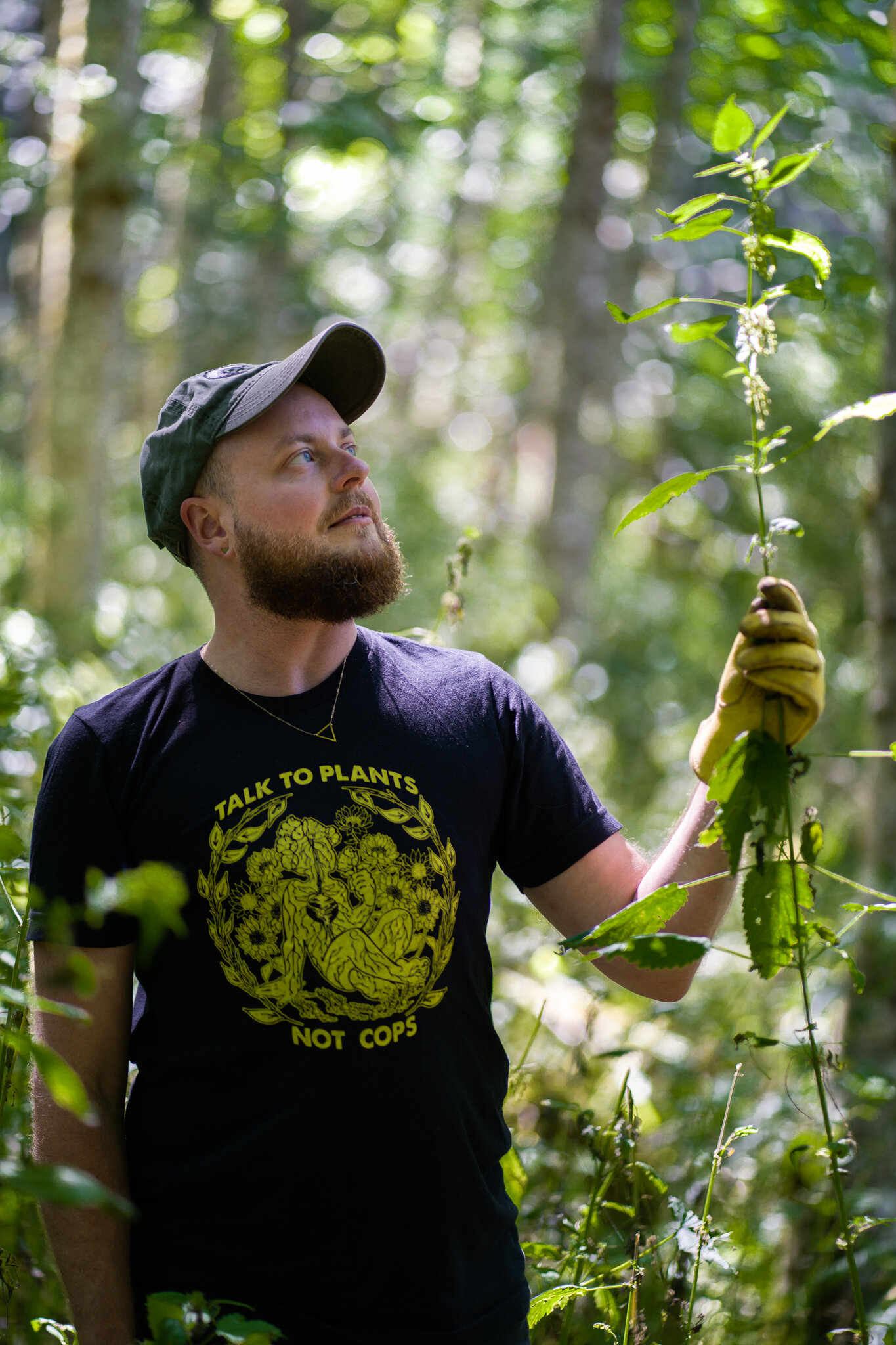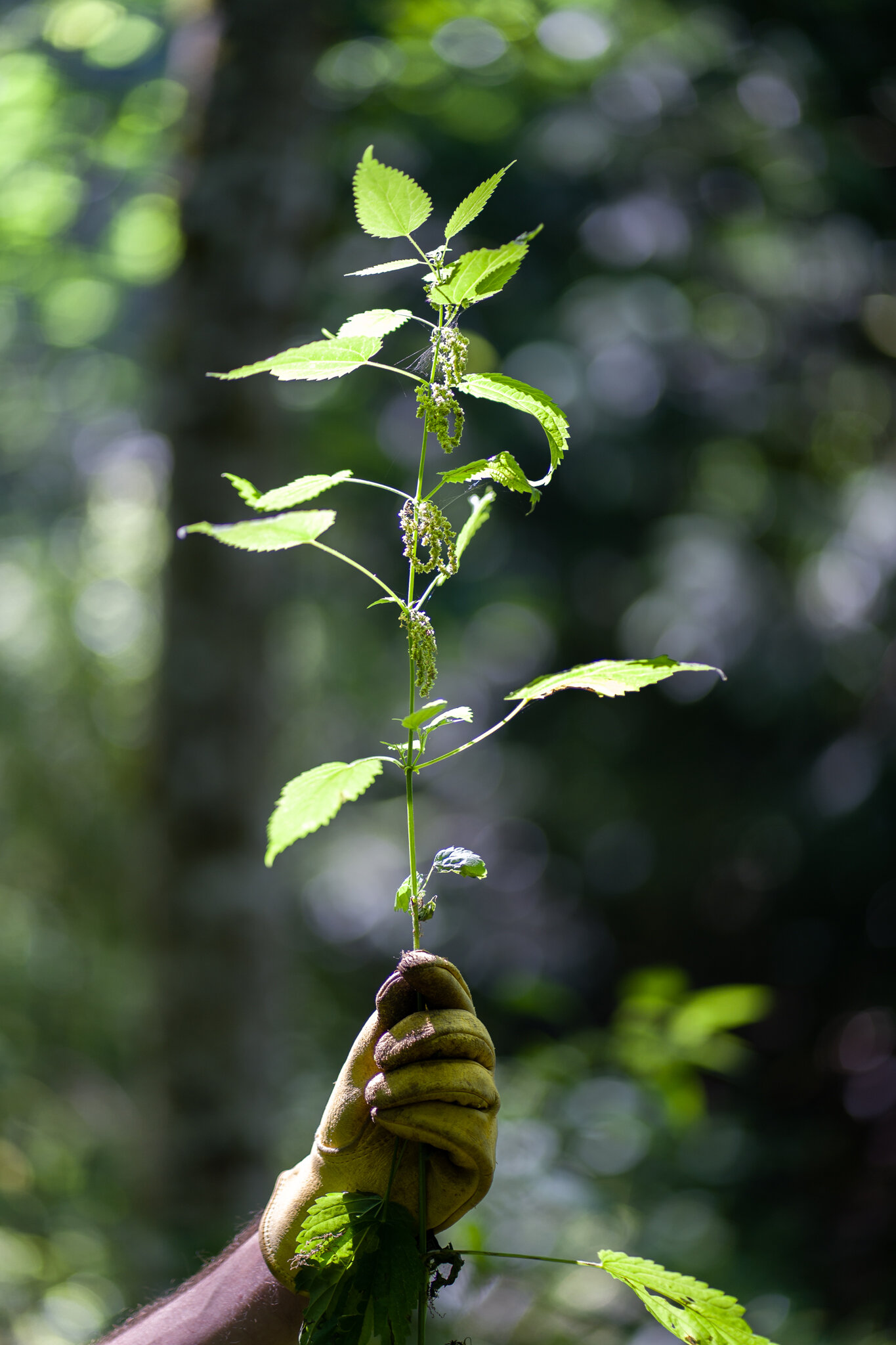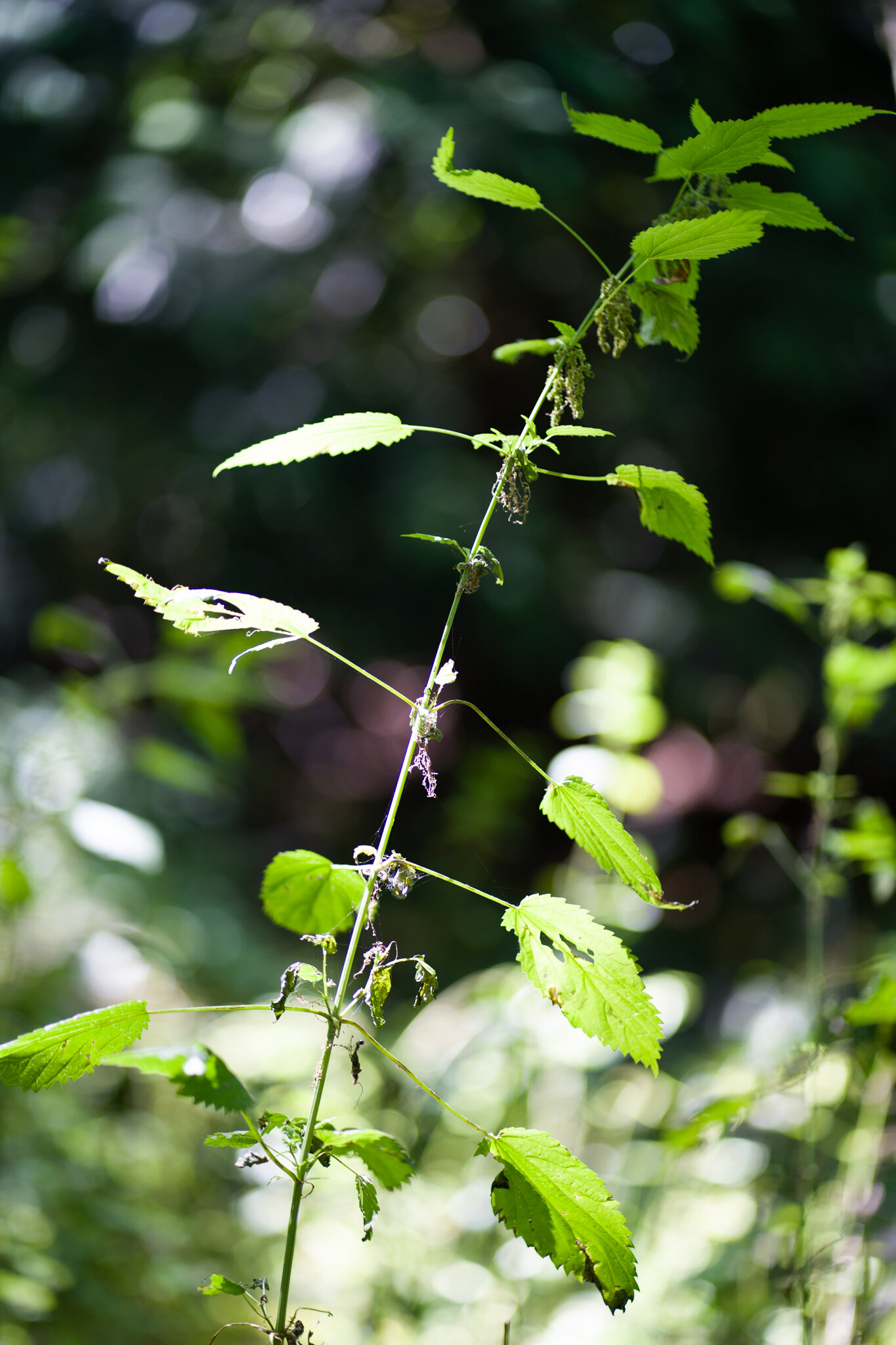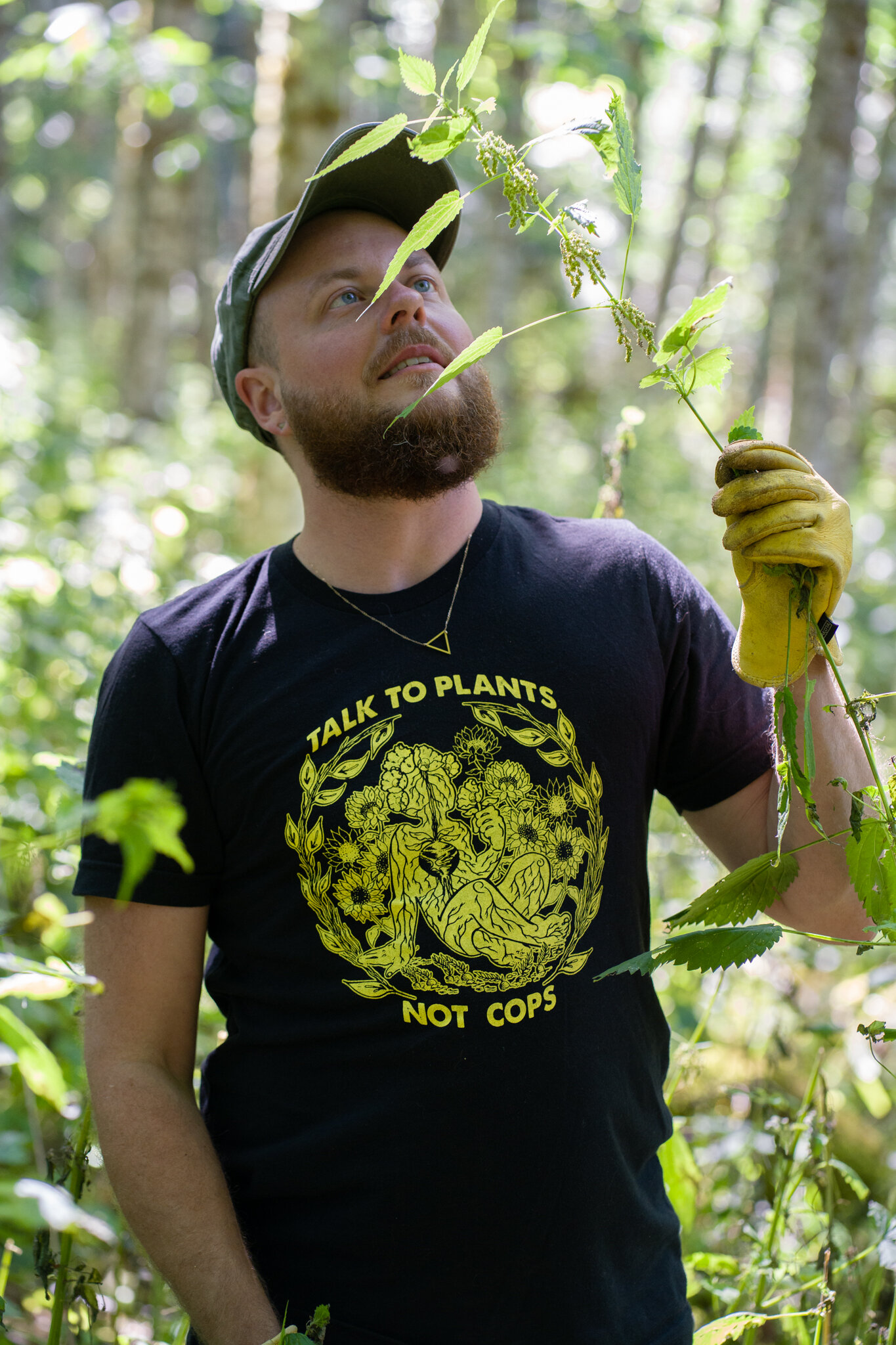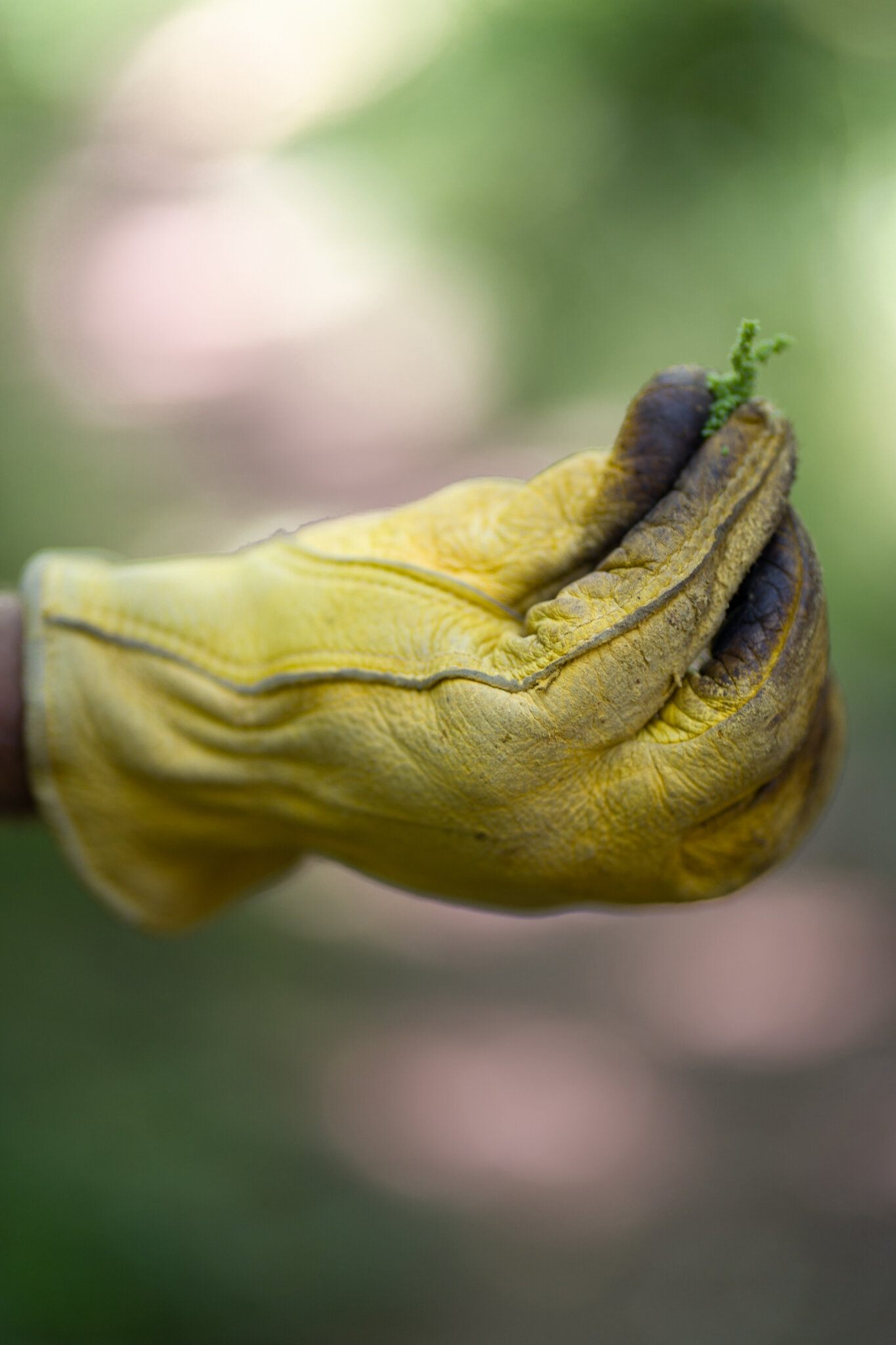Favourite Plants of Forest Heart Botanicals
Images by Brette Little
Larkin Schmiedl runs Forest Heart Botanicals, providing herbal medicine services that are “driven by the desire for ecological and social justice.” With over 19 years of experience with wild plants, organic farming and wilderness living skills, Larkin has been fascinated with plants his whole adult life. He is a herbalist offering plant medicine, herbal consultations, and plant-based workshops.
Q&A with Larkin Schmiedl
How would you describe yourself and your business?
I’m a 39-year-old white settler on Salt Spring who’s lived here for 3 years. I’m queer and trans, and the natural world is just so profoundly important to me. I am a deep plant geek.
My business is called Forest Heart Botanicals. And what that is, is herbalism. I work with plants that I grow and gather and buy to make medicines, and then I use those medicines to treat people. I also give educational workshops.
What do you enjoy about living on Salt Spring Island?
I’m deeply in love with the close connection with nature that rural life affords me. We have a pretty special community here too. There’s so much love, care, and space for relationship. It’s not perfect, but it feels like one of the most queer-positive places someone could live rurally in Canada. That’s important. I hope it can become even more so. We need spaces where we can feel safe and be in connection with nature. We deserve that. So do BIPOC communities. I really want that for them as well. I’m also really committed to my big garden plot here. I even planted a tree!
“
We need spaces where we can feel safe and be in connection with nature.”
- Larkin Schmiedl
Tell us about some of your favourite plants we can find here on Salt Spring.
It’s very hard to choose a favourite!
Roses
Roses are almost like the plant representative of Salt Spring for me. And everyone seems to be into wild roses on this island! They are just so intoxicatingly gorgeous. You can use the petals and the fruit (the hips) and leaves of rose medicinally. The hips are full of vitamin C, and the petals are a beautiful heart-lifter and antidepressant which can be supportive in times of grief. Smelling roses can help with this as well. Rose leaves are astringent, and that makes them useful for anything you need to dry up or firm up in terms of tissue or excess water in the body.
Horsetail
Horsetail is an abundant plant that can be gathered earlier in the spring before its leaves fall horizontally (pick when leaves point at a 45-degree angle). Horsetail is full of silica, which is supportive for the connective tissue in our bodies. It’s also a plant you need to cycle on and off so that this silica doesn’t build up in your body. It can help strengthen hair and nails and gives the body lots of minerals and nutrition. You can dry the above-ground parts and just drink it as a tea.
Nettle
Nettle is always a standby plant for me. I love it. And every part of it is useful. In Spring, we can eat the top 4-6 leaves before it flowers. After you pick these, the plant will branch and keep growing out two stems instead of one. These leaves are useful medicinally as an iron and nutrition-rich tea. And they can be helpful for some folks with allergies. Its leaves are also high in protein when eaten. Nettle seeds have been used to support the kidneys, and are also diuretic.
Nettle’s roots are medicinal too - they can support if someone has benign enlarged prostate for example. You can dig the roots in the fall after the plant has completed its growth cycle.
Nettle stalks can also be used to make string and rope! I’m teaching an online class on this very thing.
Hawthorne
Hawthorne is another plant we have in abundance on Salt Spring. Some consider European Hawthorne invasive so this is a great plant to use. Hawthorne’s medicine focuses on the heart. It supports both the emotional heart and the physical. It can be very supportive for minor heart conditions and as a preventative. It’s the flowers, leaves and fruit of Hawthorne that you use. Just look for the tree with giant thorns! And as I’ve been taught, it’s good to bring an offering for Hawthorne - they’re a powerful magical tree and you don’t want to mess with them. Treat them with respect.
Is there anything else you'd like to share?
There’s a culture of foraging that seems to be becoming increasingly popular. It worries me. Not only are there people who’ve stewarded this land for millennia and know infinitely more about it than settlers could culturally… There are also such profoundly complex webs of relationships that surround each plant. I don’t think it’s as simple as “take 1 in every 10 plants,” which is a mantra that’s often repeated when talking about foraging. We need to go beyond that and think about what is our right to engage with plants in a place. We need to learn and take seriously our responsibilities for life on this planet, across the board. If we deplete biodiversity, if we remove plants that certain insects are depending on, and affect them without even knowing it - what impact are we having?
“In this world, I believe what we need to be doing is building commitment. Building relationships. Learning the subtleties. Learning how to actually be in nature.”
If we’re brought up in settler culture, we don’t learn an understanding of how to respect life. We don’t learn how important it is to deepen into a place - places are treated as disposable; changeable - you can just buy some real estate and go somewhere. There is no commitment in that. In this world, I believe what we need to be doing is building commitment. Building relationships. Learning the subtleties. Learning how to actually be in nature. If we don’t, we’re done for, as are many other species. I want people to think about all of these kinds of things when they’re foraging. It goes so much deeper. And we can use it to open to life itself and such profound engagement.
Thank you Larkin for sharing your deep plant knowledge, and so much more. You can see Larkin’s herbal medicine on his website or book a consultation.

